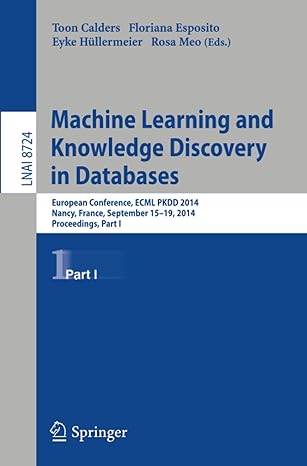Answered step by step
Verified Expert Solution
Question
1 Approved Answer
CSCI 1 6 0 Computer Science - I ( Spring 2 0 2 4 ) Assignment 1 Due Date: 1 / 1 7 ( Wednesday
CSCI Computer Science I Spring
Assignment
Due Date: Wednesday pm
Total Points: Points
Name: Thomas Rice
Please type your answers right below each of the questions.
Answer the following questions: Note: questions through above are points each points
Describe what are the functions of a CPU?
Processing and executing programming instructions in whats known as a fetchexecute cycle.
Describe the various logical components of a CPU along with functions each of these components perform.
Transistors A switch that blocks or allows electric current to pass through depending on the result of the process.
Arithmetic Logic Unit Performs arithmetic and logical operations, such as addition or AND operations.
Control Unit Fetches instructions and decodes operations into currents for the transistors to process.
Floating Point Unit Performs arithmetic operations on floatingpoint numbers.
Hardware registers storage of data. memory
Explain the difference between main memory and secondary storage devices.
Primary Secondary
RAMROM SSDHDD
Volatileimpermanent Nonvolatilepermanent
Directly accessed by CPU Indirectly accessed
Fast Slow
Expensive Inexpensive
What is a memory address?
Location of a bit of memory. Stores the datainstructions
Explain the statement Different processor types have different machine languages
Processors have an architecture, essentially, how they are designed to accept and execute instructions. The different architectures require different programming languages.
Explain the java compilation process including the function of JVM
Java Compiles the source code into byte code. Then, it is interpreted within JVM into machine language which the CPU then uses to execute the instructions.
How is the java compilation process different from a traditional programming language like C or C
Java compilation is different from these languages because it contains both a compiler and an interpreter. This means that the same Java source code can be used on CPUs of any supported architecture.
Explain the concept of platform independence or portability.
Portabilityplatform independence refers to the ability for source code to be translated into machine languages of any architecture.
What is the relationship between a highlevel language and a machine language?
A machine language consists of s and s that, when executed by a CPU, indicate if a transistor should or should not allow current to pass through. A highlevel language consists of Englishor other languages containing a set of instructions that is then translated into machine language to then be executed as a program by the CPU.
What is Java bytecode?
Java bytecode is an intermediar language that translates into machine language using the interpreter known as JVM quickly in order to make on the fly instructions for the CPU.
Select the word from the following list that best matches each of the following phrases:
Assembly, Compiler, IDE, Interpreter, Java, Lowlevel, Machine, High
point each points
a A program written in this type of language can run directly on a computer
Machine Language
b Generally, each language instruction in this type of language corresponds to an equivalent machine language instruction
Assembly Language
c Most programmers write their programs using this type of language
High Level Language
d This type of program translates code in one language to code in machine language
Assembly
e This type of program interweaves the translation of code and the execution of the code
How many bytes are in each of the following? Make sure to show your calculations
points each points
a KB
b MB
c GB
How many bits are there in each of the following? Make sure to show your calculations
points each points
a bytes
b KB
c MB
The music on a CD is created using a sampling rate of measurements per second. Each measurement is stored as a number that represents a specific voltage level. Suppose each of these numbers requires two bytes of storage space. How many MB does it take to represent one hour or music? points
Please provide details about each step that you took to arrive at the answer.
If a language uses unique letters and symbols, how many bits would be needed to store each character of a document? Why? points
If a CPU is rated at GHz how many instructions per second can the CPU execute? How much time does it take to execute one instruction? points
A RAM chip is organized as X memory, ie each unit contains bits, or a byte. There are address pins on the chip. How many bytes does that memory chip contains? For clue read section in the textbook points
Please provide details about each step that you took to arrive at the answer.
In HTML a color
Step by Step Solution
There are 3 Steps involved in it
Step: 1

Get Instant Access to Expert-Tailored Solutions
See step-by-step solutions with expert insights and AI powered tools for academic success
Step: 2

Step: 3

Ace Your Homework with AI
Get the answers you need in no time with our AI-driven, step-by-step assistance
Get Started


